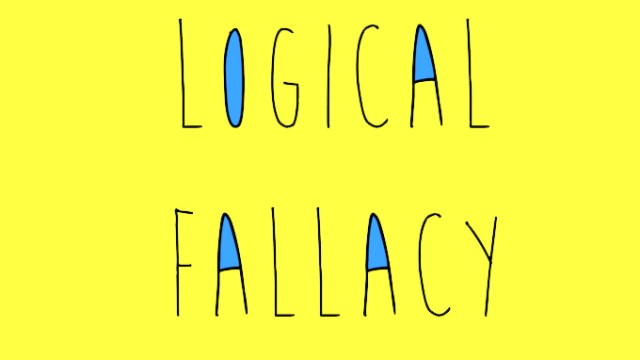Mostly Mute Monday: A distant galaxy cluster and the power of Einstein’s gravity
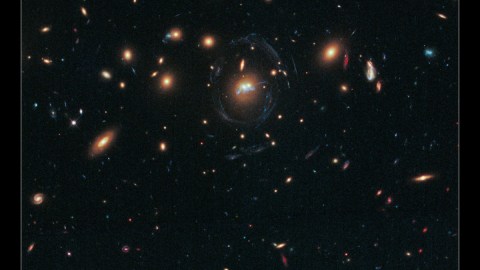
The ability for mass to bend and magnify background light is a unique feature of General Relativity. But it can fool us, too.
“Gravitational and electromagnetic interactions are long-range interactions, meaning they act on objects no matter how far they are separated from each other.” –Francois Englert
A century ago, Einstein put forth a new theory of gravity: General Relativity. The solar eclipse of 1919 finally confirmed that mass gravitationally bent light around it.
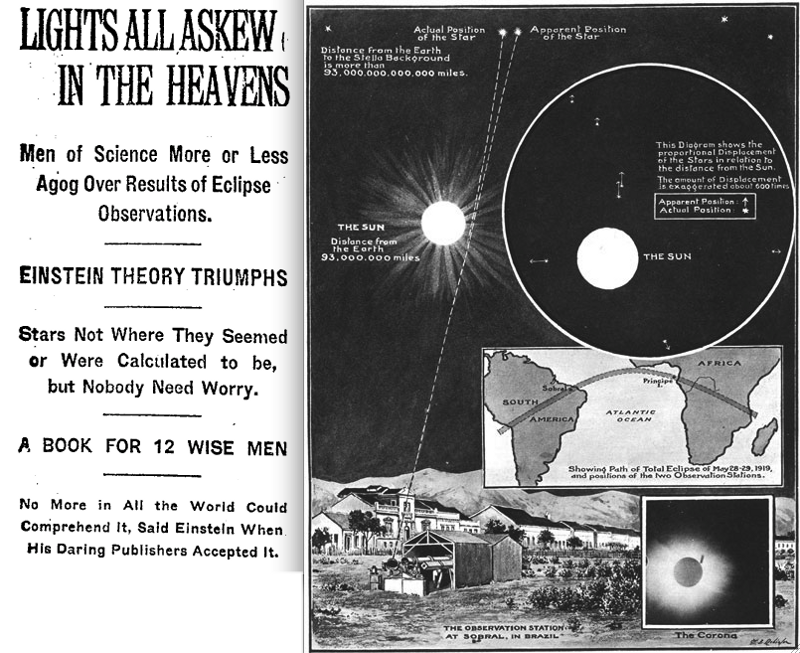
But only much later was the phenomenon of gravitational lensing confirmed: where a distant galaxy cluster acted as a lens, magnifying and distorting the background galaxies behind it.
In 2014, the Hubble Space Telescope imaged an ultra-massive galaxy cluster found by the Sloan Digital Sky Survey, and unveiled what appeared to be a spectacular, multiply-imaged distortion of blue, star-forming background galaxies.
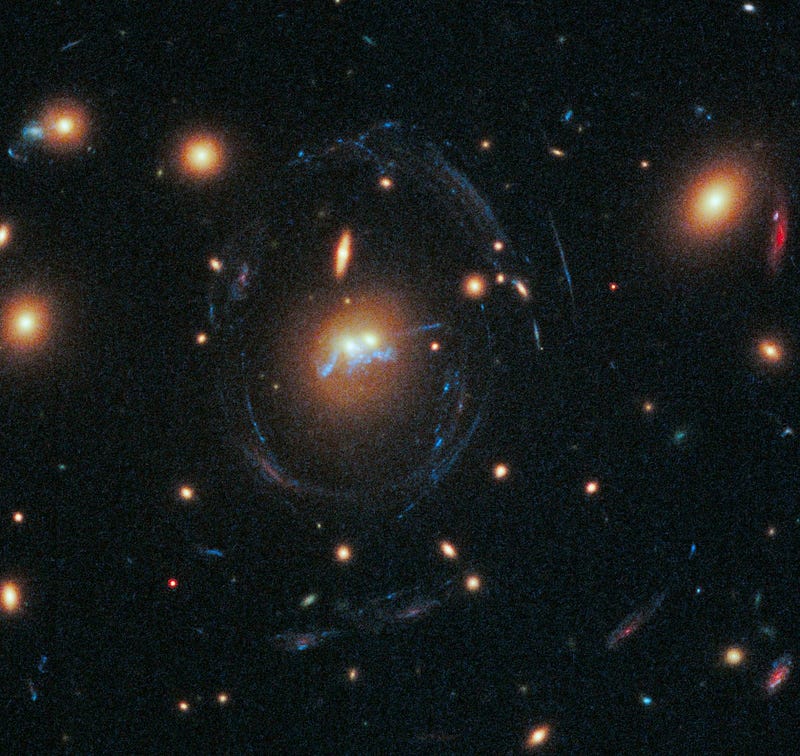
The multiple images of similar structures, the distortions and the similar colorations all pointed to gravitational lensing.
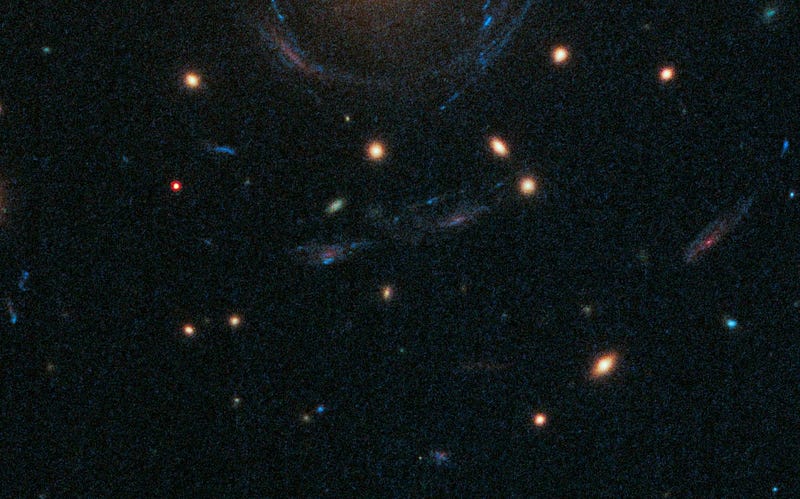
But a careful analysis of the data showed that while the outer arcs are indeed lensed background galaxies…
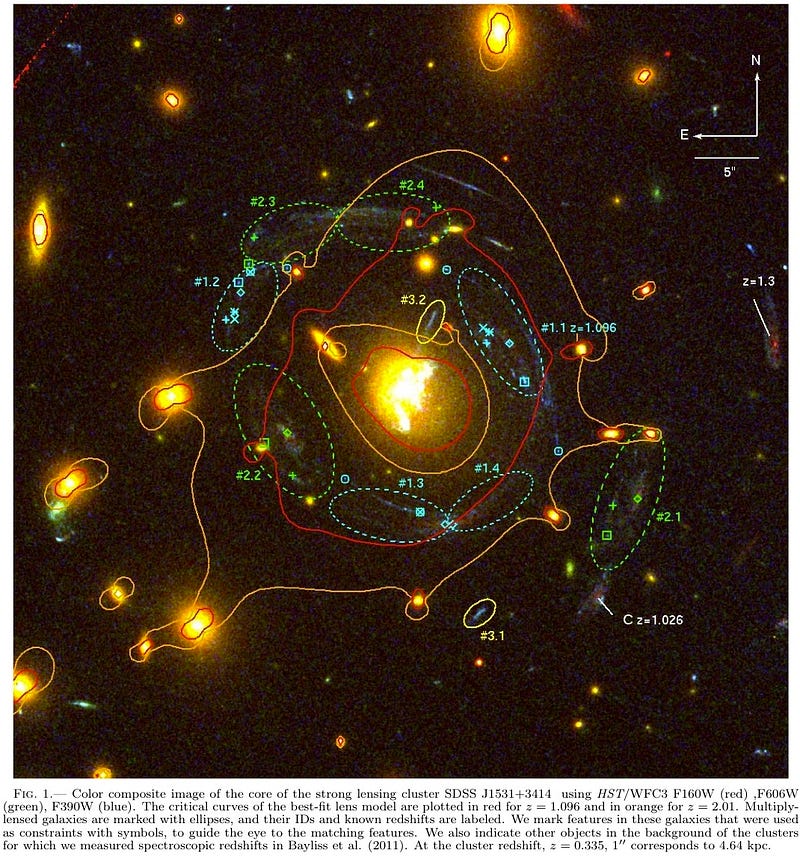
the brightest blue lights, interconnecting the two giant ellipticals at the cluster’s center, come from the merger of the galaxies and the surrounding gas themselves.
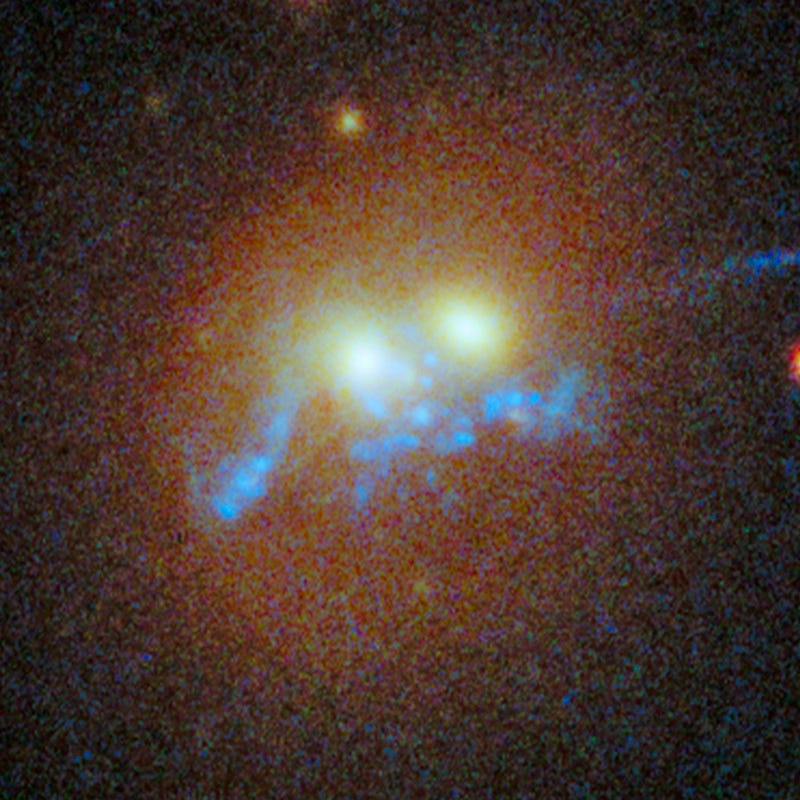
What we’re looking at is a combination of the stars and galaxies of the foregrounds cluster, some 4,000 times as massive as the Milky Way, a transient burst of star formation, and only a few background objects.
Despite our excellent intuition, there’s no substitute for good data.
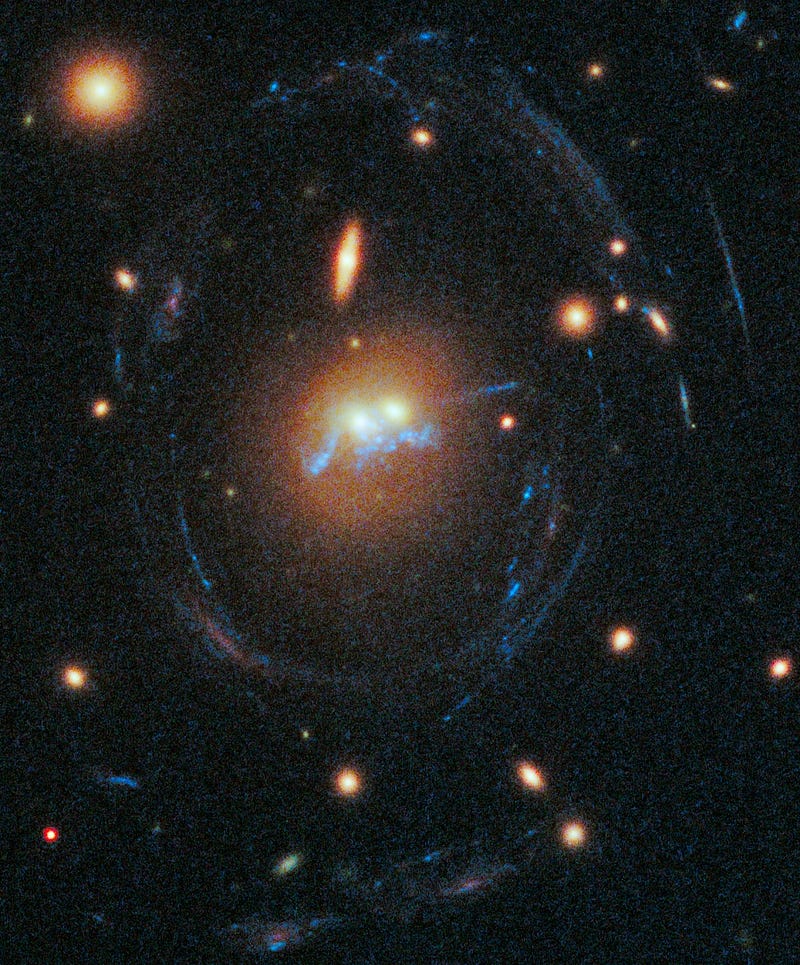
Mostly Mute Monday tells the story of a single astronomical phenomenon or object in visuals, images, video and no more than 200 words.
Leave your comments on our forum, and check out our first book: Beyond The Galaxy, available now, as well as our reward-rich Patreon campaign!





